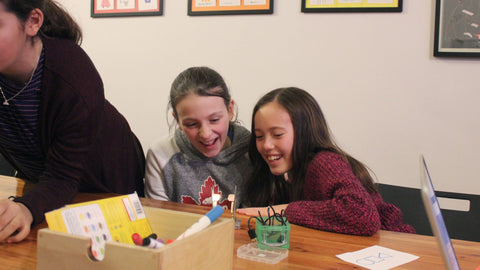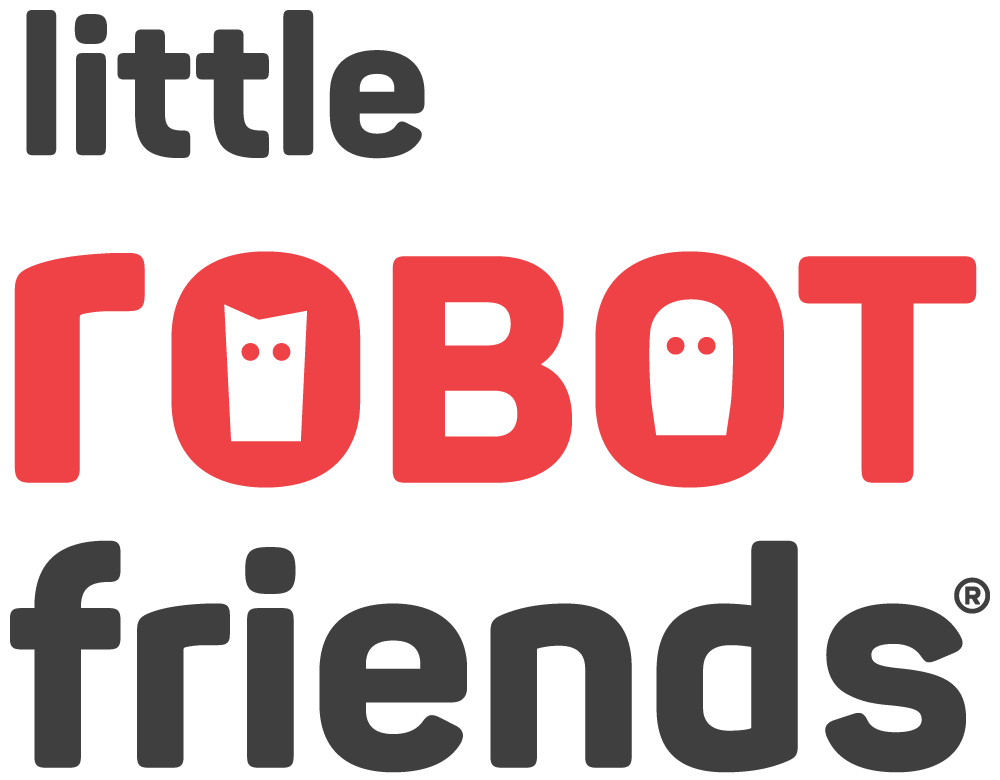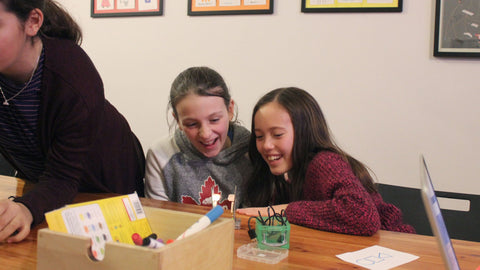
Our absolute favourite teaching moment is when a child realizes they've made something happen on their own and just learned how to code. We've seen it time and time again in our workshops and classes. The kids go through a learning process, making plenty of mistakes, but each failure gets them closer to the solution.
Admittedly, it can be difficult to stand back, and only offer as much guidance as needed, but the rewards are great. Each experience helps move them toward a growth mindset—which links to a love of learning as kids understand skills can be learned and practiced. Join us in helping kids develop a growth mindset, by starting with these two strategies:
End Negative Self-Talk
We've all been there, voicing negative thoughts about our abilities to ourselves (and others) based on what we perceive as our failures. Let's help the kids in our lives change their perspective on mistakes by modelling growth mindset ourselves.
How to get started:
Take a page from a teacher's playbook and use the think-aloud strategy. It's where you voice your thoughts aloud so children can learn what you're thinking and how you're solving a challenge. It's most often used by teachers for teaching reading or math strategies but works well for demonstrating kids how to rewrite their internal script when faced with a challenge.
Next time something doesn't go the way you hoped, try this:
- Name how you are feeling to show all feelings are allowed (e.g., I feel so frustrated right now)
- Acknowledge what you hoped for (e.g., I wanted that to work the first time).
- Reframe the mistake (e.g., Well, I did learn that __________. That's going to help me figure out what to try for next time).
Planning to Solve Problems
Kids face problems every day—from the personal to the academic. Let's focus on teaching them to tackle problems with confidence. To do so, they'll need an explicit formula and plenty of real opportunities to solve them.
How to get started:
Make it a habit to practice solving and discussing problems together—reading books and playing games is an excellent place to start. As well, be sure children see you engaged in problem-solving activities, and like our previous suggestion, you can voice aloud the steps you take to find a solution.
Teach and model the basics of problem-solving:
- Identify the problem
- Identify the goal
- Brainstorm what you know
- Choose a solution to try
- Reflect and reassess

